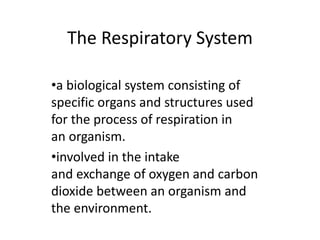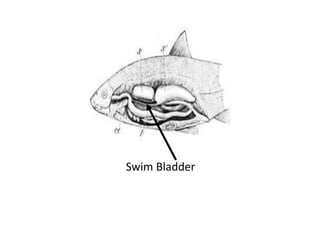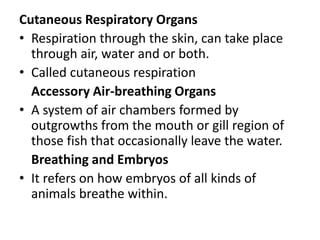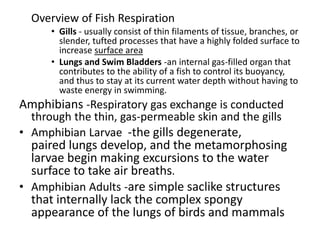The respiratory system allows for the intake and exchange of oxygen and carbon dioxide. It consists of specific organs like lungs and gills that vary between aquatic and terrestrial organisms. In fish, gills allow for respiration in water via filaments that absorb oxygen. Lungs and swim bladders provide buoyancy and gas exchange in some fish that breathe air. Over time, organisms evolved accessory organs and different ventilatory mechanisms to support respiration on land or in water.








